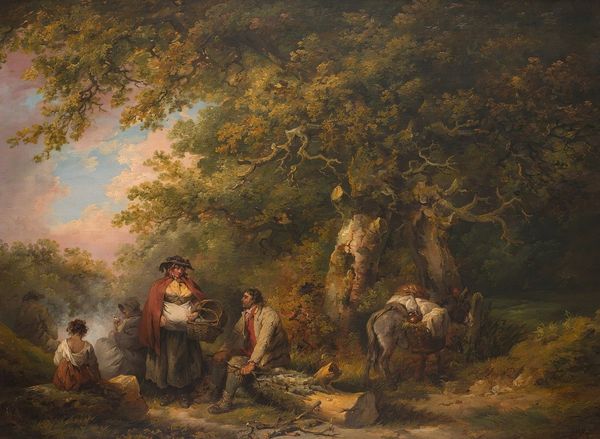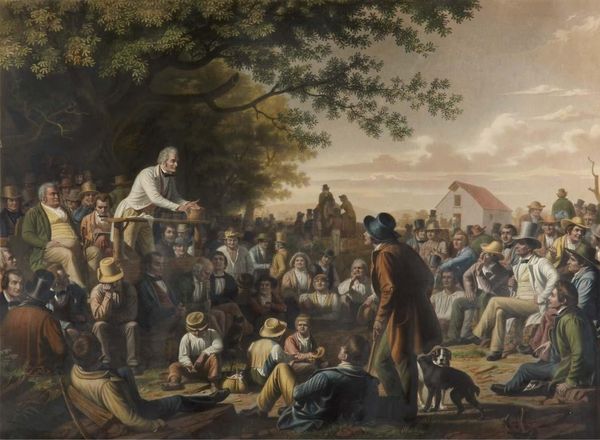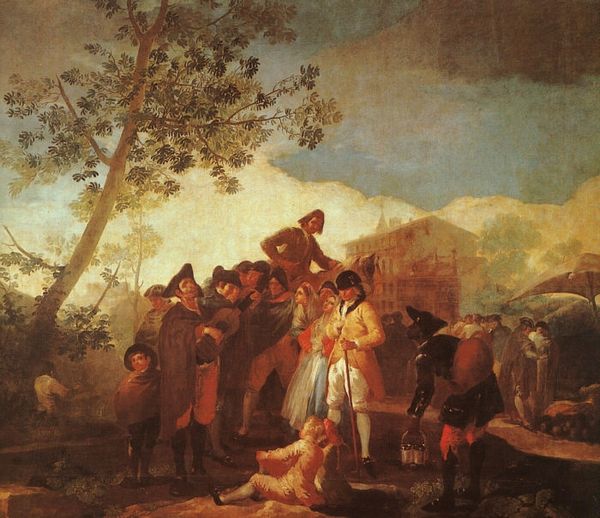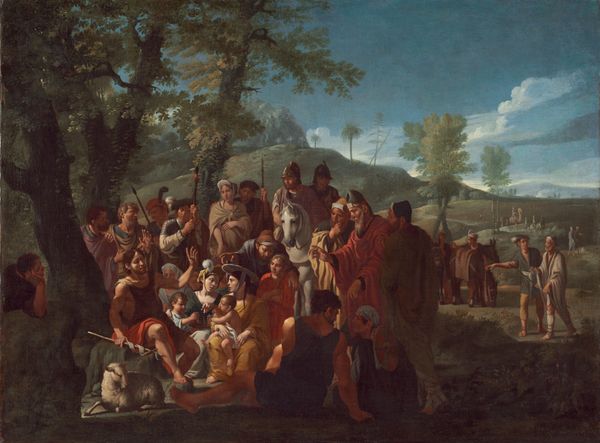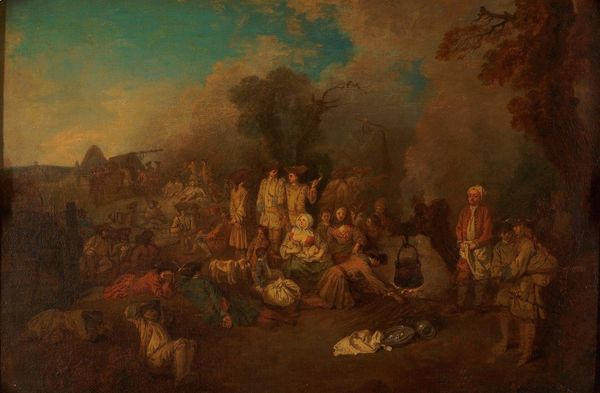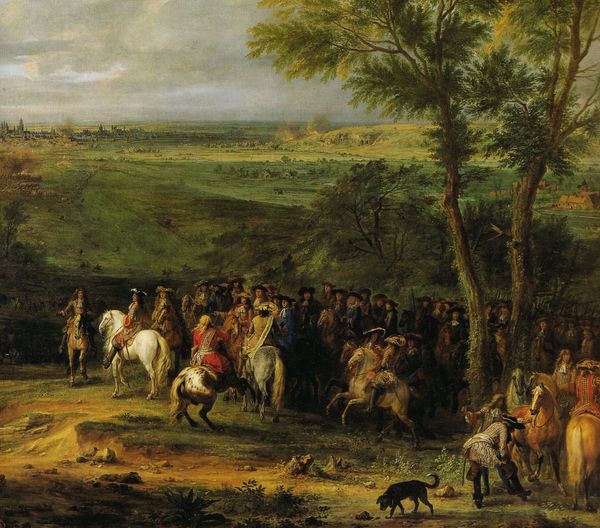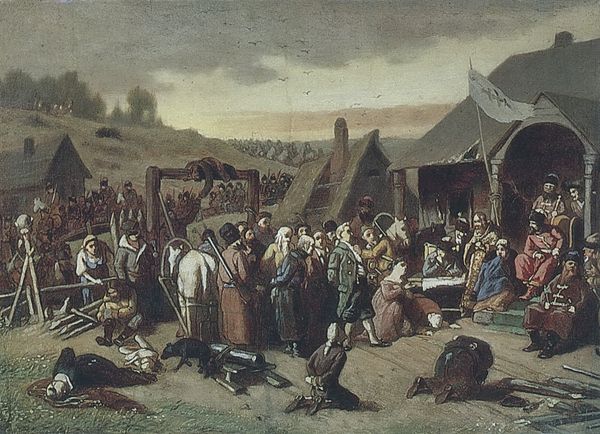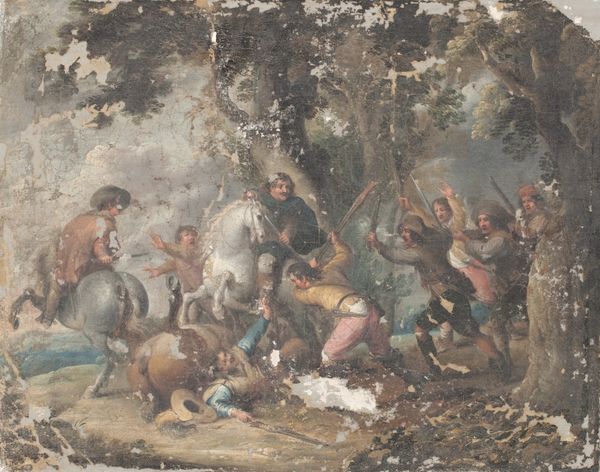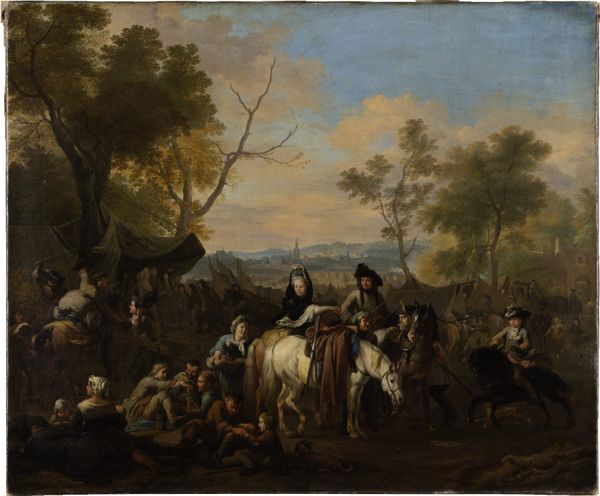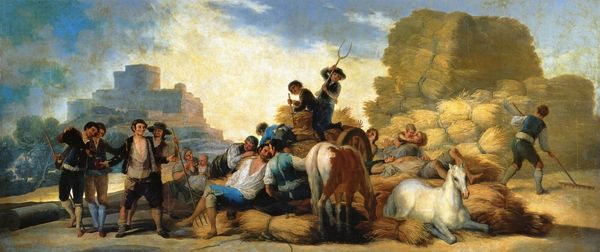
painting, oil-paint
#
narrative-art
#
baroque
#
dutch-golden-age
#
painting
#
oil-paint
#
landscape
#
figuration
#
oil painting
#
genre-painting
#
history-painting
Copyright: Public Domain: Artvee
Curator: Right, let's consider this work by Jan Steen, “John the Baptist Preaching,” painted around 1653. Oil on canvas, of course. My first reaction is it's sort of like a Dutch Golden Age interpretation of a rock concert. A rather solemn one, though. Editor: What a clash of materials here! The coarse linen canvas meeting delicate layers of ground pigments mixed with oil. The very touch of the artist so present. It speaks of a moment when craftsmanship elevated a mere subject matter into a discourse about materiality. Curator: Precisely! You notice the faces in the crowd? They are ordinary, almost like everyday folks pulled off the streets of Haarlem. Look at the detail in their clothes versus the rougher landscape. And Steen using biblical subject matter...was this playing into or challenging traditional artistic categories of the time? Editor: I think it both exploits and mocks the traditional subject. This John isn't divine; he is Everyman turned preacher. Observe how the materiality reinforces this - earthly pigments presenting a celestial tale. Do you perceive that lady in white as divine light juxtaposed against earthly textures and labor? Curator: Interesting reading. I see a clear hierarchy still operating, the "finer" pigments and detail are reserved for her garments, implying status and perhaps challenging egalitarian readings too strongly, wouldn’t you agree? Editor: Hierarchy undoubtedly remains. But through these pigment choices and placements, is Steen commenting on the relationship of societal roles with their tangible presence—the cloth we wear, the spaces we occupy. The rough textures seem to mock the idea that divine authority lives on the horse-riding soldiers. Curator: I think we agree, the material context—both canvas and pigment—become storytellers themselves here. Almost blurring high and low subject matter. Editor: Steen's choices turn even the landscape itself into a theological stage where human struggle interacts with faith. He used landscape like any commoner element: accessible material speaking on powerful intangible experiences. I'm glad this has illuminated for me a clearer comprehension of this important, complex painter.
Comments
No comments
Be the first to comment and join the conversation on the ultimate creative platform.

